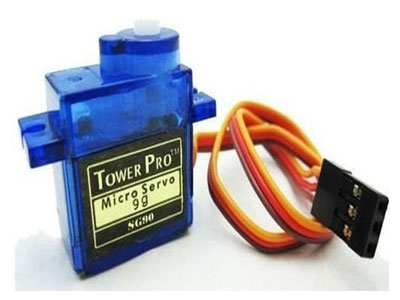Key Takeaway
An actuator in a servo system is the component responsible for converting electrical signals into physical motion. It’s the part that makes things move, such as rotating a robotic arm or adjusting a throttle. Actuators are essential because they take the electrical commands from the controller and translate them into precise mechanical actions.
Simply put, the actuator is the “muscle” of the servo, transforming input signals into motion. This control is crucial for applications like robotics, where exact movement is critical, or in industrial settings where consistent and accurate operation is required for efficiency and performance.
Introduction to Servo Actuators
A servo actuator is a device that takes an electrical control signal and translates it into a physical movement. In a servo system, the actuator is the component responsible for moving the load to a precise position or adjusting the speed of rotation. It’s the “muscle” of the system, driven by the brain of the servo motor and control circuitry.
Whether it’s rotating a robotic arm or adjusting the position of a conveyor belt, the actuator is crucial for enabling the accurate, high-performance movement associated with servo systems. Understanding how these actuators function is fundamental for optimizing the performance of automation systems.

Different Types of Actuators in Servo Systems
There are various types of actuators used in servo systems, each suited for specific applications. The most common types include rotary actuators and linear actuators. Rotary actuators control rotational motion, making them perfect for applications requiring precise angle positioning, such as in robotic joints. On the other hand, linear actuators control movement along a straight line, often used in applications like lifting mechanisms or sliding doors.
Hydraulic, pneumatic, and electric actuators are the primary categories based on the energy source. Electric actuators are the most widely used in servo systems due to their precision and reliability, while hydraulic and pneumatic actuators are typically employed in systems requiring higher force or speed.
Each type has its advantages and limitations, and selecting the right one depends on the specific needs of your servo system.
The Role of the Actuator in Servo Motor Control
The actuator plays a central role in servo motor control by executing the commands received from the control system. It converts the electrical signals sent by the controller into mechanical movement, ensuring the motor performs as expected. The actuator’s performance directly affects how well the servo system can achieve precise control over position, speed, and torque.
In a feedback loop system, the actuator constantly adjusts based on real-time data, ensuring that the motor remains on track. For example, if a robotic arm needs to move to a specific angle, the controller sends signals to the actuator, which then makes fine adjustments to ensure the arm reaches its exact destination without overshooting or lagging.
Without actuators, servo systems wouldn’t be able to offer the high level of precision they are known for in industrial automation.
How Actuators Affect Servo Motor Performance
Actuators have a direct impact on the performance of servo motors, determining the system’s speed, accuracy, and force. A high-quality actuator will provide smooth and precise movement, ensuring the system operates efficiently. Conversely, a poorly performing actuator can lead to jerky movements, slower response times, and a loss of precision.
The actuator’s responsiveness and efficiency also affect the overall energy consumption of the servo system. More efficient actuators allow the system to perform tasks faster and with less power, which is critical for industries aiming to reduce operational costs. Furthermore, modern electric actuators offer better control over torque and position, contributing to the servo motor’s enhanced performance in tasks requiring high precision.
Key Applications of Servo Actuators in Automation
Servo actuators are widely used in various industries for tasks that require precise control of movement. In robotics, for instance, actuators enable the controlled motion of arms, allowing robots to perform delicate tasks like assembly, welding, or material handling. In industrial automation, actuators help move conveyor belts, adjust machine parts, and position tools, ensuring that production processes run smoothly.
Another key application is in CNC (computer numerical control) machines, where actuators allow for the precise cutting, drilling, or milling of materials. The accuracy provided by servo actuators ensures that each operation is carried out with minimal error, which is critical in manufacturing environments where consistency is key.
These applications highlight the versatility and importance of actuators in servo systems across various sectors, from automotive to aerospace and beyond.
Conclusion
Actuators are at the heart of servo systems, converting control signals into physical movements with high precision and reliability. By understanding how actuators work and selecting the right type for each application, engineers can significantly improve the performance of their servo systems.
For anyone working in automation or robotics, mastering the concept of servo actuators is essential. They are not just mechanical components but critical elements that enable the accurate and efficient functioning of modern machinery in a wide range of industrial applications.
